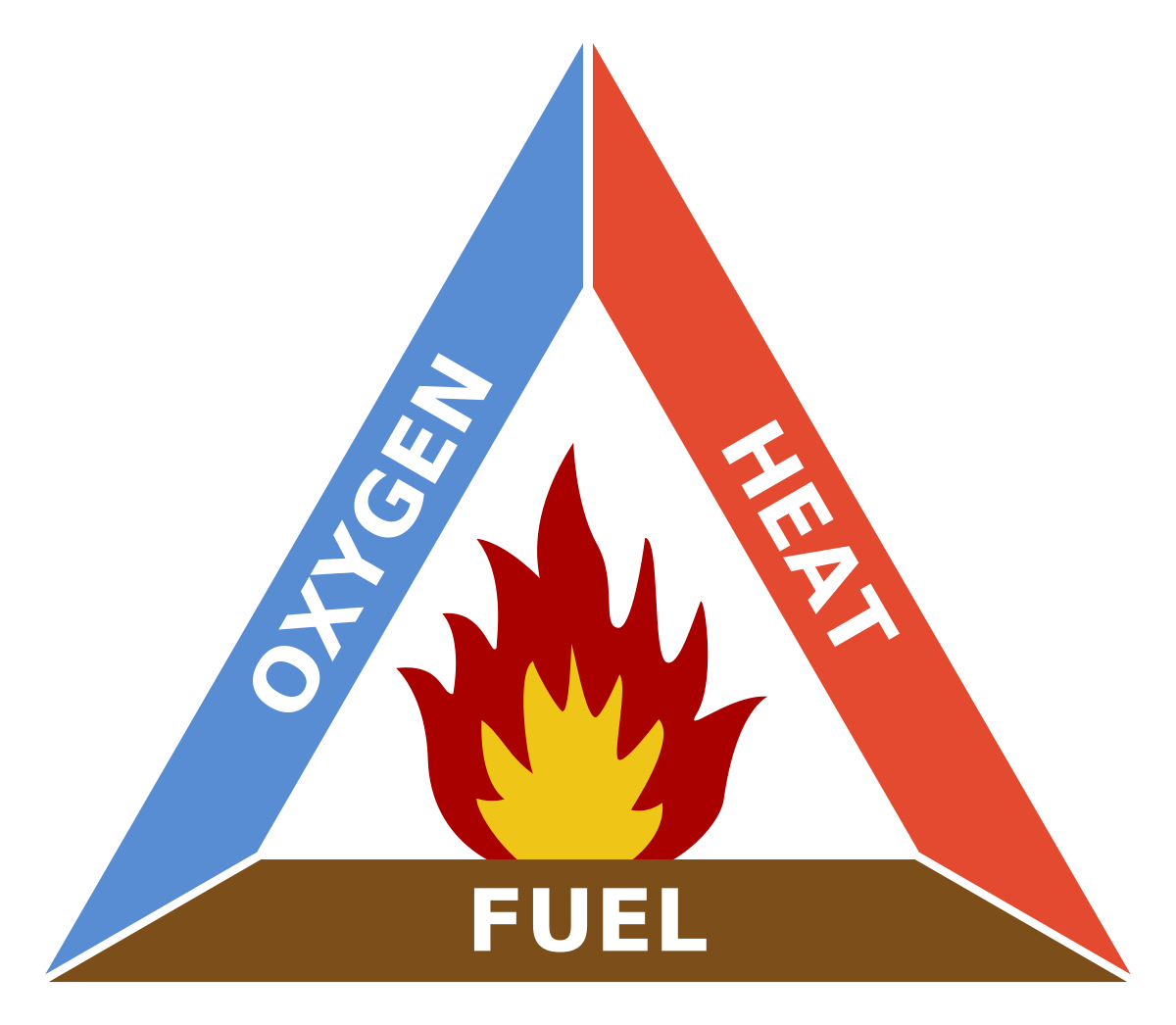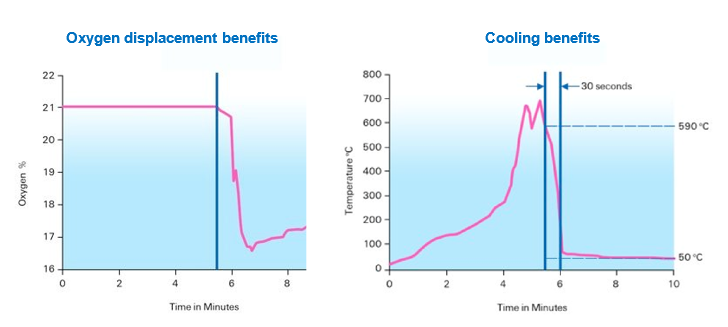How does water mist work?
For a fire to spread, it relies on the presence of the three elements of the fire triangle, oxygen, heat and combustible material. The removal of any one of these elements can suppress or extinguish a fire.

Water mist removes heat and displaces oxygen within the triangle. It achieves this by dispersing water through specially designed nozzles at low, medium or high pressure. Generally, as system pressure increases, the water droplet size decreases. This, in turn, significantly increases the total surface area of water and so leads to the production of a greater volume of steam, removing more energy from the fire. The effect of steam as a firefighting agent should not be ignored - when water is changed into steam, it expands some 1700 times by volume. Oxygen displacement systems have long been used in marine applications and in power-generating plants using coal.
Another documented physical phenomenon is that the droplets also act as a barrier to the radiant heat from the fire.
It takes 335kJ to heat 1 litre of water from 20°C to 100°C and 2257kJ to convert 1 litre of water to steam. Water expands 1700 times upon vaporisation, so the high energy-absorption capability of small water droplets produces the rapid cooling and oxygen dilution characteristics that are unique to water mist.

Water mist is effective at suppression by cooling and suffocating the fire, and not primarily by wetting (wetting is a secondary mechanism), which is the case with large droplet systems (such as sprinklers which mainly rely on gravity).
Water mist systems are designed so that this can take place in several ways, non-exclusive examples as follows:
- High-speed directional nozzles at the fire load from the top and/or sides to generate enough momentum to overcome the upward draught, to address the risk locally.
- Nozzles are placed closer to the base of the fire so that water mist is dragged to the flame front. Water mist therefore leverages the Archimedes Principle where the hot, less dense air is rising, and the cooler air is being drawn into the fire’s base.
- Deploying the mist in an enclosed compartment so that water mist entrains the fire gases, expands and suffocates the fire.
This also means that water mist nozzles are not necessarily fitted on the ceiling of compartments, it depends on the application and the intended use. It also means that water mist nozzles rarely look alike because they are application and operation-specific. Some are designed to be directional in order to deliver a specific spray pattern at a protected risk whilst others are required to provide a diffusing mist for volume protection. In addition, some are designed for specific functions such as sidewall nozzles for the protection of rooms or to provide water curtains in atrium buildings for life safety applications. There are even nozzles specifically designed for floor void protection within data centres.
The nozzle design is also governed by the type of fire risk they are installed to protect, and this varies greatly on whether the nozzle is designed to control, suppress or extinguish the fire.
Read more - How is watermist entrainment utilised in firefighting?

